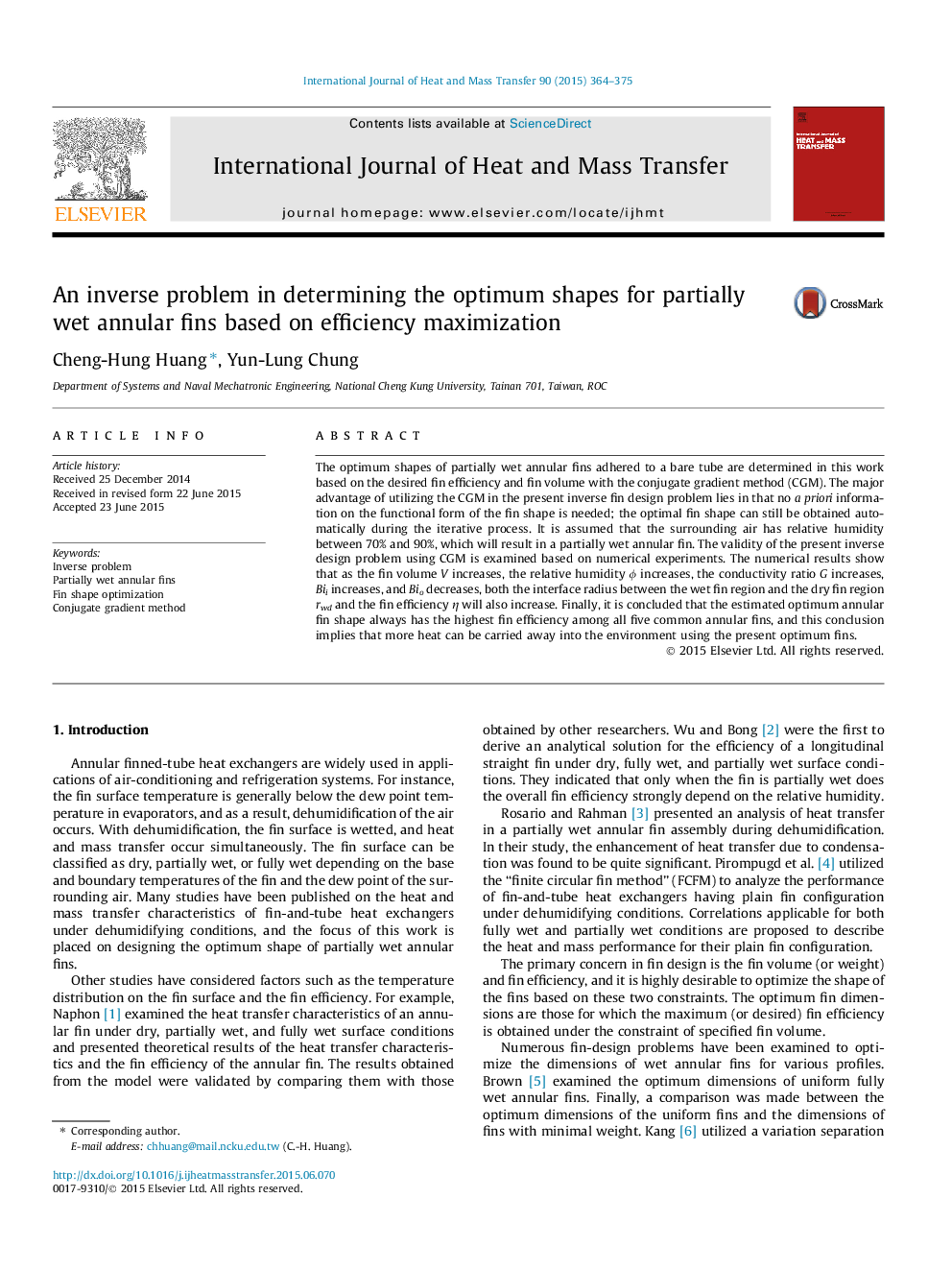| Article ID | Journal | Published Year | Pages | File Type |
|---|---|---|---|---|
| 7056398 | International Journal of Heat and Mass Transfer | 2015 | 12 Pages |
Abstract
The optimum shapes of partially wet annular fins adhered to a bare tube are determined in this work based on the desired fin efficiency and fin volume with the conjugate gradient method (CGM). The major advantage of utilizing the CGM in the present inverse fin design problem lies in that no a priori information on the functional form of the fin shape is needed; the optimal fin shape can still be obtained automatically during the iterative process. It is assumed that the surrounding air has relative humidity between 70% and 90%, which will result in a partially wet annular fin. The validity of the present inverse design problem using CGM is examined based on numerical experiments. The numerical results show that as the fin volume V increases, the relative humidity Ï increases, the conductivity ratio G increases, Bii increases, and Bio decreases, both the interface radius between the wet fin region and the dry fin region rwd and the fin efficiency η will also increase. Finally, it is concluded that the estimated optimum annular fin shape always has the highest fin efficiency among all five common annular fins, and this conclusion implies that more heat can be carried away into the environment using the present optimum fins.
Related Topics
Physical Sciences and Engineering
Chemical Engineering
Fluid Flow and Transfer Processes
Authors
Cheng-Hung Huang, Yun-Lung Chung,
